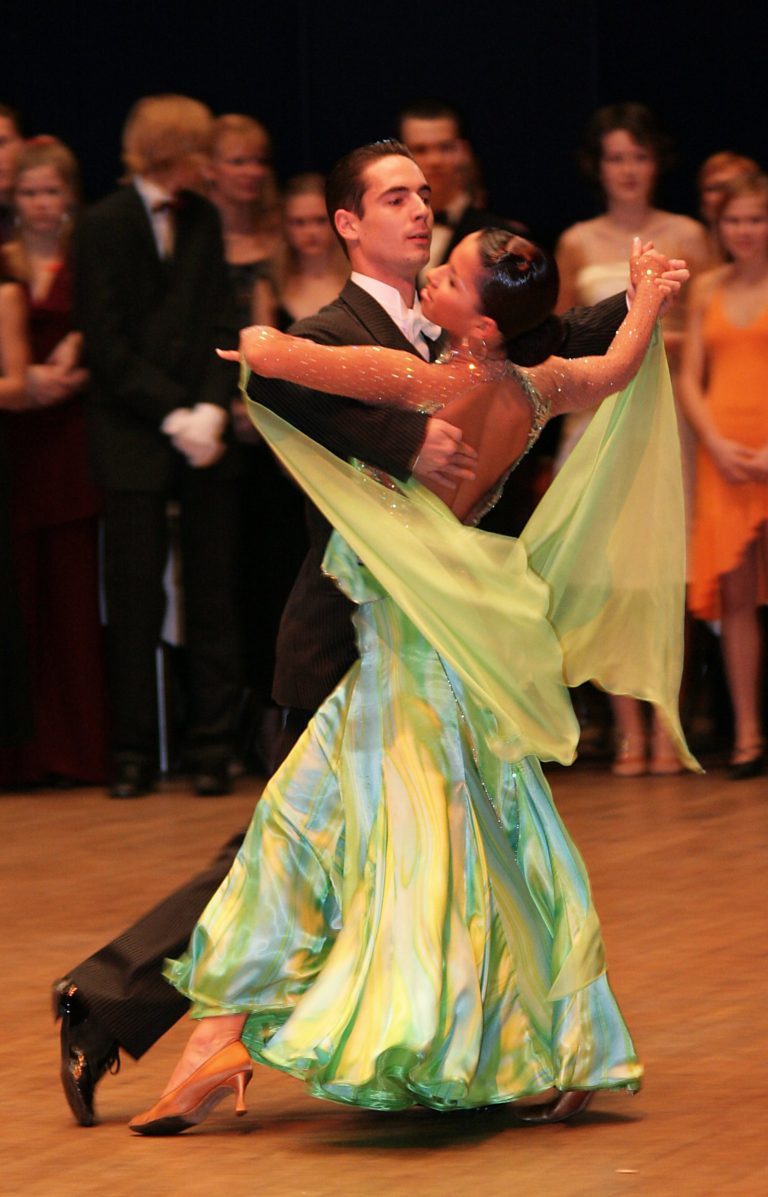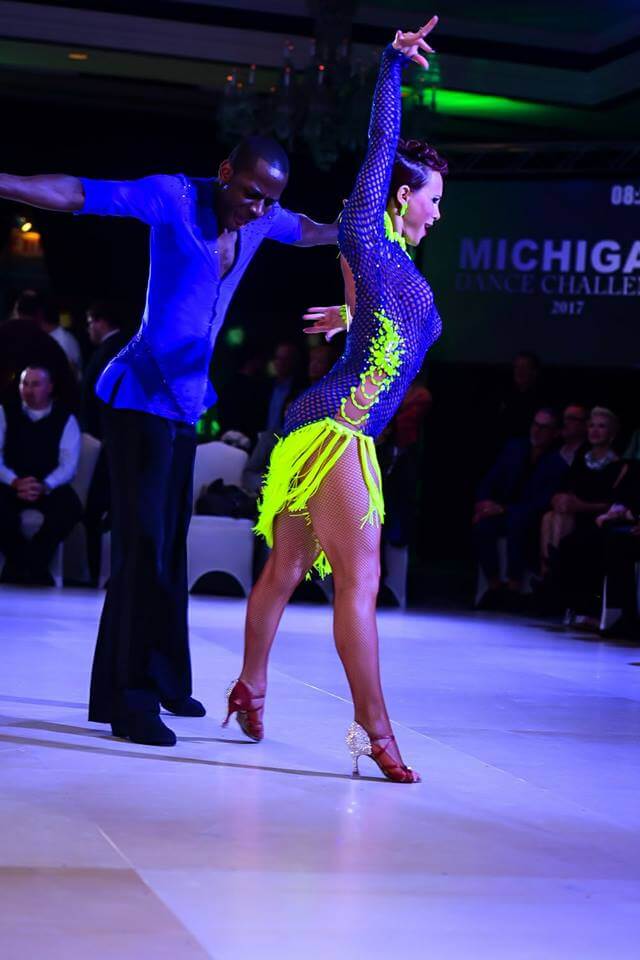East Coast Swing Tutorial for Beginners
Known as America’s “fun” dance, East Coast Swing is popular in both the Ballroom Dancing and Country-Western Dancing genres. In this post, you will learn how to get started in the East Coast Swing.
Below, is a quick look into what to expect in this blog post:
· History of East Coast Swing
· Musicality and Counting
· The Basic Step
· Dance Hold
· Putting it all together
To get started, let’s talk a little about the history of America’s fun dance. Knowing the history will help you to understand its roots, how it has evolved and the characteristics of the dance.
East Coast Swing History
There are many styles of Swing dancing and East Coast Swing traces its roots to the Lindy Hop which originated in the late 1920s in the Savoy Ballroom in Harlem. In the early 40s, Lindy Hop was tamed and simplified in dance schools to become a ballroom dance called Eastern Swing and was later called the East Coast Swing. It’s an upbeat dance, characterized by its rock step, bounce, and swing hip action. Today it is danced in social settings, and in competitive settings under the Ballroom Dance and Country-Western Dance circuits.
Now that we understand the history of East Coast Swing, we will dive into the music and how to count.
Musicality and Counting
The first step to dancing East Coast Swing is understanding the music, rhythm, and what counts are used. The original Swing music used is a form of Jazz that developed in the 1930s and 1940s. Today, Swing is danced to a wide variety of music such as Pop, Country, and Rock and Roll. To be considered a “Swing” dance, the music needs to have a swing beat. In dance terms, swing beats have an emphasis on the upbeat, which is on counts 2 and 4. Swing music can range from 128-144 beats per minute, which can be quite fast but tons of fun! The first rhythm you will learn in the East Coast Swing is the 6-count rhythm. Your teacher may count the basic rhythm in two ways: 1 2, 3 a4, 5 a6 or Rock-Step, Triple-Step, Triple-Step. As we move into learning the Basic steps in East Coast Swing, try to sing these counts as we learn.
Dancing the Basic Step
There are two main elements that make up this dance: The Rock Step and the Triple Step. A Rock Step is a unit of two steps in which the second step replaces weight and is taken in the opposite direction of the first. In this dance, the rock step is a back step that replaces forward. A Triple Step is another term for Chasse (which means to chase) involving three weight changes in two beats of music. Common Triple Steps in swing include sideways, forward, backward, and turning in place.
To see what Triple Steps look like, check out this video: https://youtu.be/z9T69kae3cY
Leader’s Steps: Begin with your left foot and dance a back-rock step followed by two sets of side triple steps. To clarify, step back, replace your weight forward, then step side, together, side while traveling left, then side, together, side while traveling to the right and repeat from the beginning.
Follower’s steps: Begin with your right foot and dance a back-rock step followed by two sets of side triple steps. In other words, step back and replace your weight forward to the left foot, then step side, together, side while traveling right, then side, together, side while traveling left and repeat from the beginning.
Below I have listed some pro tips to help you become a better swing dancer today!
1. Take small steps. This dance is fast, so taking smaller steps will help you to stay on time with the music.
2. Maintain a slight turn out in the feet where your toes are pointing to 11 and 1 on the clock. Having this slight turn out will make the swing hip action feel more comfortable.
3. Keep the balls of your feet in contact with the floor. Stepping with the balls of your feet rather than your heels will allow you to arrive quicker from step to step.
Here is a quick video that demonstrates the Basic Step and body movement of Swing: https://www.facebook.com/justdanze/videos/631116001056204/
EC Swing Body MovementThis is a great exercise that will help you with the upper body movement in East Coast Swing!! #dancetips #dancelessonsinhouston #eastcoastswing #ballroomdance #justdanze
Posted by Just Danze on Thursday, March 5, 2020
Next up, I will go into how to hold your partner. This is commonly referred to as a frame.
Swing Dance Hold
There are many dance positions used in the East Coast Swing. Today, I will explain the Open Position in double handhold and Swing Closed Position.
Open Position: Begin by facing your partner, standing about twelve inches apart. If you are leading, extend both hands towards your partner with your palms facing in. Followers, you will hook your hands into your partners. This is called the “cup and hook” clasp. Connected hands should be halfway in between the partnership.
Swing Closed Position: Begin by facing your partner, standing about twelve inches apart. Leaders will turn slightly left, causing your right side to be closer to your partner and followers will turn slightly right, causing your left side to be closer to your partner. At this point you should be in a slight V-shape. The leader’s right hand is placed on the follower’s left shoulder blade and the follower’s left hand rests on the leader’s right shoulder. The leader’s left hand and follower’s right hand are held at the follower’s waist level in the same cup and hook clasp as in the Open Position.
Now that you have practiced the Basic and learned about the two main dance positions, you are ready to put it all together!
Putting It Together
First, let us begin by dancing the Basic in the Open Position. Facing your partner in the double handhold, shift your weight towards the front of your feet to create a compression connection with your partner. This type of connection creates spring-like energy, used to send the follower away from the leader. Using this connection, leaders can initiate the back-rock step. Both partners will rock away from each other and then return to the starting position to go into the two side triple steps. Dance this multiple times in a row until you feel comfortable.
To dance the Basic in Swing Closed Position, begin by using compression to lead the follower to step back. As you return to Swing Closed Position, you will turn slightly to face each other for the two side triple steps, then repeat from the beginning.
A great song to practice to for your first time is Michael Jacksons “The Way You Make Me Feel”. It has a great swing beat that is easy to follow and is on the slower side of Swing!
Keep practicing and let me know how it goes in the comments below : )
I hope you enjoyed this post and are itching to learn more about the East Coast Swing! This is just the beginning of your Swing dance journey!
If interested in learning more, schedule a consultation today and join us on the dance floor soon.




